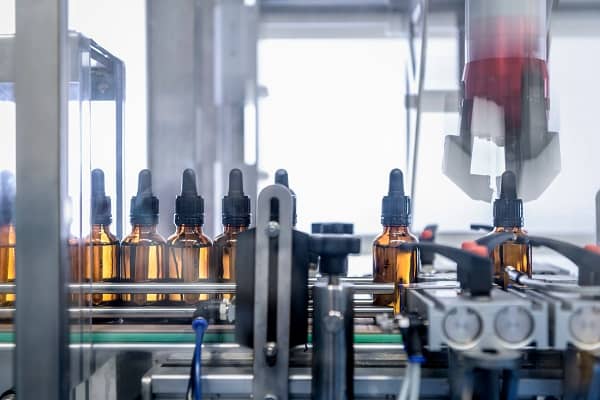Innovation in technology has revolutionised industries worldwide, and the pharmaceutical sector is no exception. Among the most exciting areas of change lies pharmacy packaging. Once perceived simply as a means to store and protect medicines, packaging is now undergoing a digital transformation that’s reshaping its purpose and capabilities. With advancements in materials, design, and data-driven solutions, the landscape of pharmaceutical packaging is evolving rapidly. But what does this mean for the industry’s future?
This blog explores the changes currently taking place, how technology is driving these shifts, and why it’s only the beginning of a new era for pharmaceuticals.
The transformation is now
Discussions about digital innovation often focus on healthcare delivery, research, or precision medicine. However, innovation in pharmaceutical packaging has quietly grown into an essential driver of industry progress. These advancements go far beyond surfaces like aesthetic appeal or functionality. Instead, they’re supplementing the pharmaceutical sector’s goals of safety, efficiency, and compliance.
One of the most exciting developments we’re witnessing is the role of smart packaging solutions. These technologies integrate sensors, QR codes, and even IoT functions into the packaging to enable direct communication with both manufacturers and patients — offering benefits such as tamper detection and real-time usage tracking.
Another focal point is child-resistant packaging, an area where innovative materials and designs are addressing long-standing safety challenges. These packaging solutions promise not only better compliance with regulations but also enhanced usability for those who need it most.
Key innovations and their current impact
Technological advancements are touching multiple facets of pharmaceutical packaging. Here’s a closer look at the key innovations and their implications today.
1. Smart packaging for data integration
Smart packaging isn’t just for consumer goods — it’s making its way into the pharmaceutical industry to meet the increasing demand for transparency, traceability, and enhanced functionality.
Some common features being integrated into smart pharmaceutical packaging include:
- Embedded sensors that track temperature and environmental conditions to ensure medication safety during transportation.
- Near-field communication (NFC) and/or QR codes that provide users access to detailed medication instructions, reducing misunderstandings and errors.
- Real-time tracking via IoT technology, enhancing the supply chain by spotting bottlenecks or lapses in delivery procedures.
These innovations are already helping pharmaceutical companies streamline production and distribution while meeting stringent regulatory requirements.
2. Advances in child-resistant packaging
Child-resistant packaging (CRP) has been an industry standard for decades, but changes in materials science and ergonomics are dramatically improving these products. Technology has enabled designs that are functional, effective, and user-friendly for adults, while remaining safe for children.
For example, “press-and-turn” closures made from advanced composite materials ensure durability and consistency, while newer testing methods, enabled by technologies like machine learning, have identified design optimisations to enhance functionality. The added usability these solutions provide ensures patients of all ages can access medication easily while avoiding accidental ingestion by children.
3. Sustainability and advanced manufacturing
Sustainable packaging is no longer purely aspirational; it is now a central business imperative. The intersection of technology and materials innovation has helped develop biodegradable films, recyclable plastics, and tamper-resistant solutions that meet rigorous environmental standards.
Pharmaceutical companies are leveraging technologies like 3D printing and advanced moulding systems to reduce waste during the production phase and to ensure packaging is optimally designed for eco-friendliness and cost-efficiency. This move isn’t simply good PR — it resonates well with government regulations and industry partners that prioritise environmental commitments.
4. Anti-counterfeit protection
The rise in counterfeit drugs represents a growing challenge for the pharmaceutical industry. To combat this, advanced technology is creating tamper-evident sealing mechanisms and digital solutions like unique serialisation codes.
Companies are combining these with blockchain technology to create end-to-end traceability, allowing them to monitor the entire lifecycle of products — from production to usage. This not only builds trust with stakeholders but also creates a stronger defence against criminal activities in counterfeit drug distribution.
What the future of pharmaceutical packaging looks like
The trajectory of these innovations suggests an even smarter, more sustainable future for pharmaceutical packaging. With advancements in artificial intelligence, automation, and robotics, we can expect quicker production times, seamless accuracy, and reduced errors in packaging manufacturing.
Digital twins — virtual simulations of packaging systems — could become mainstream, enabling manufacturers to test durability, safety, or compliance without the need for physical prototypes. Further, AI-powered systems will refine demand forecasting, ensuring just-in-time production and aligning supply-chain processes with demand.
Sustainability, too, is likely to take centre stage, with renewable resources and circular economy models ensuring packaging is as environmentally friendly as the drugs themselves.
Why these changes matter
For pharmaceutical companies and packaging engineers, this transformation brings increased opportunities — whether it’s reducing costs, improving efficiencies, or driving compliance with evolving regulations. The potential for differentiation in a competitive market is also significant. Companies adopting smart and sustainable practices are positioned as leaders in innovation while satisfying the growing demand for more ethical and transparent business practices.
This evolution is only the tip of the iceberg. By harnessing the full potential of technology, the pharmaceutical packaging industry will continue to drive improvements in efficiency, sustainability, and drug safety — prerequisites for the modern pharmaceutical sector.
Partnering for progress
Technology is no longer an optional investment; it is a fundamental enabler of success in pharmaceutical packaging. Corporations that adapt to these changes early will not only meet industry standards but exceed them — setting new benchmarks for efficiency, safety, and sustainability.
The future of pharmaceutical packaging is already being written. Will your organisation be part of the story?

